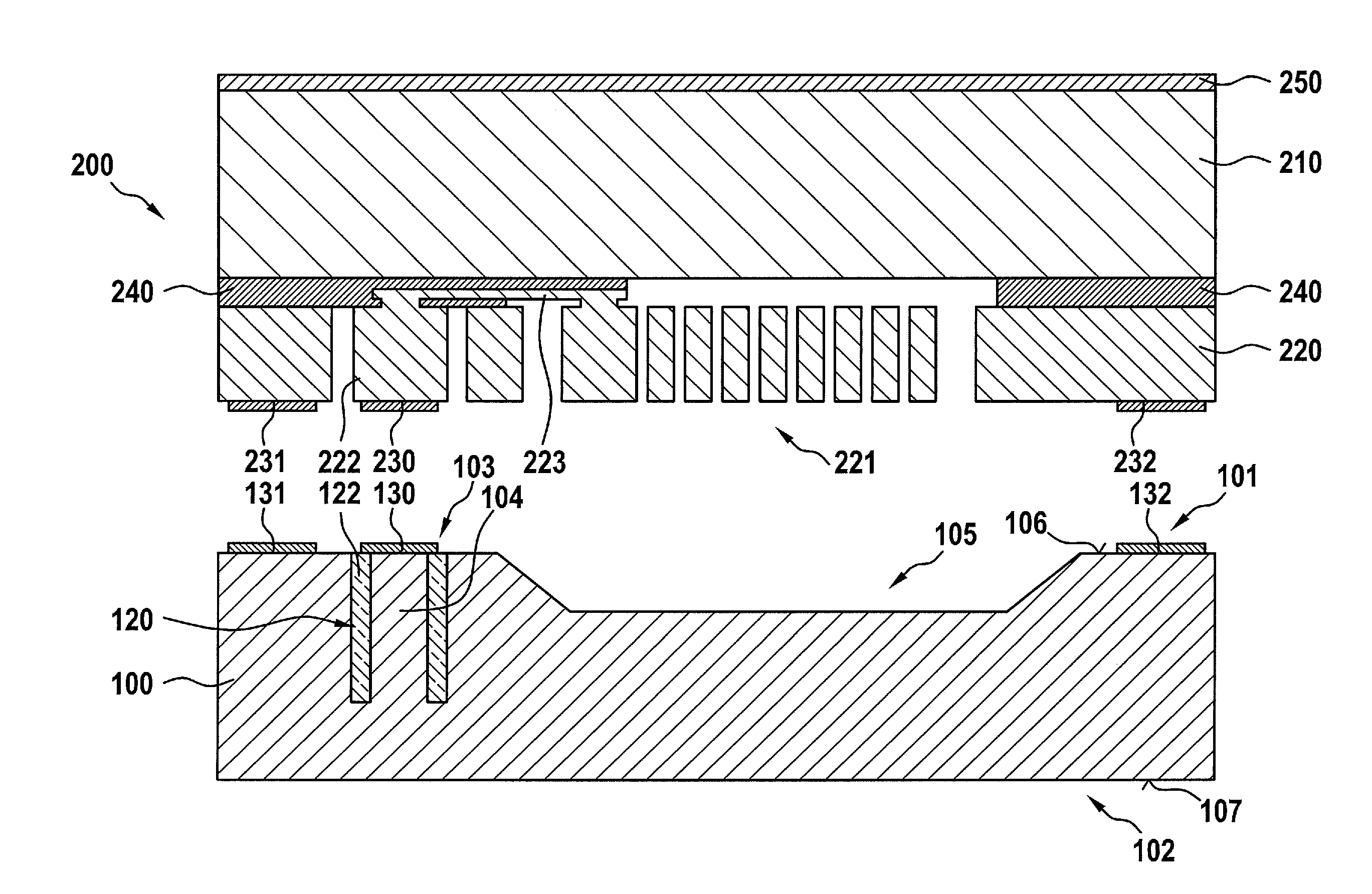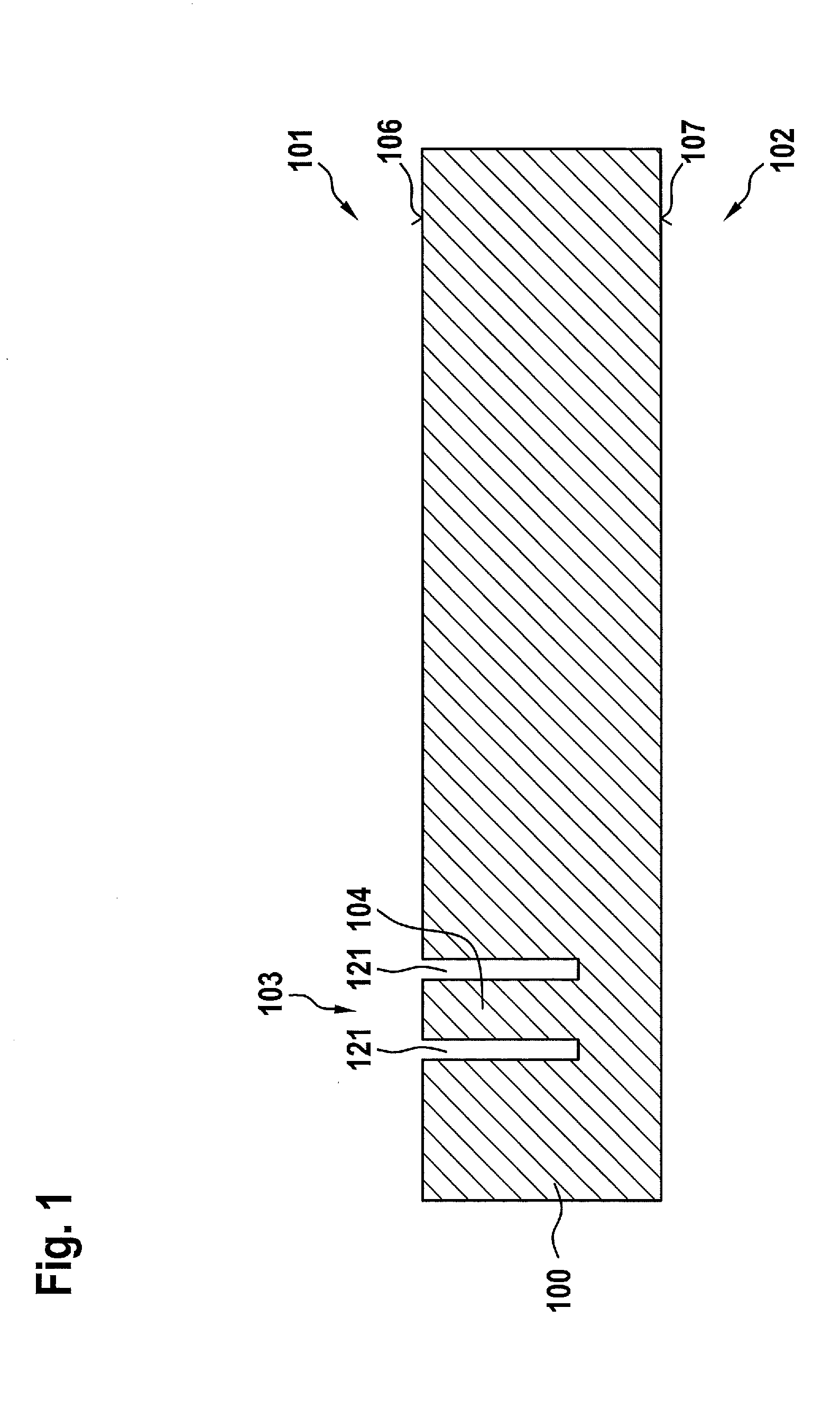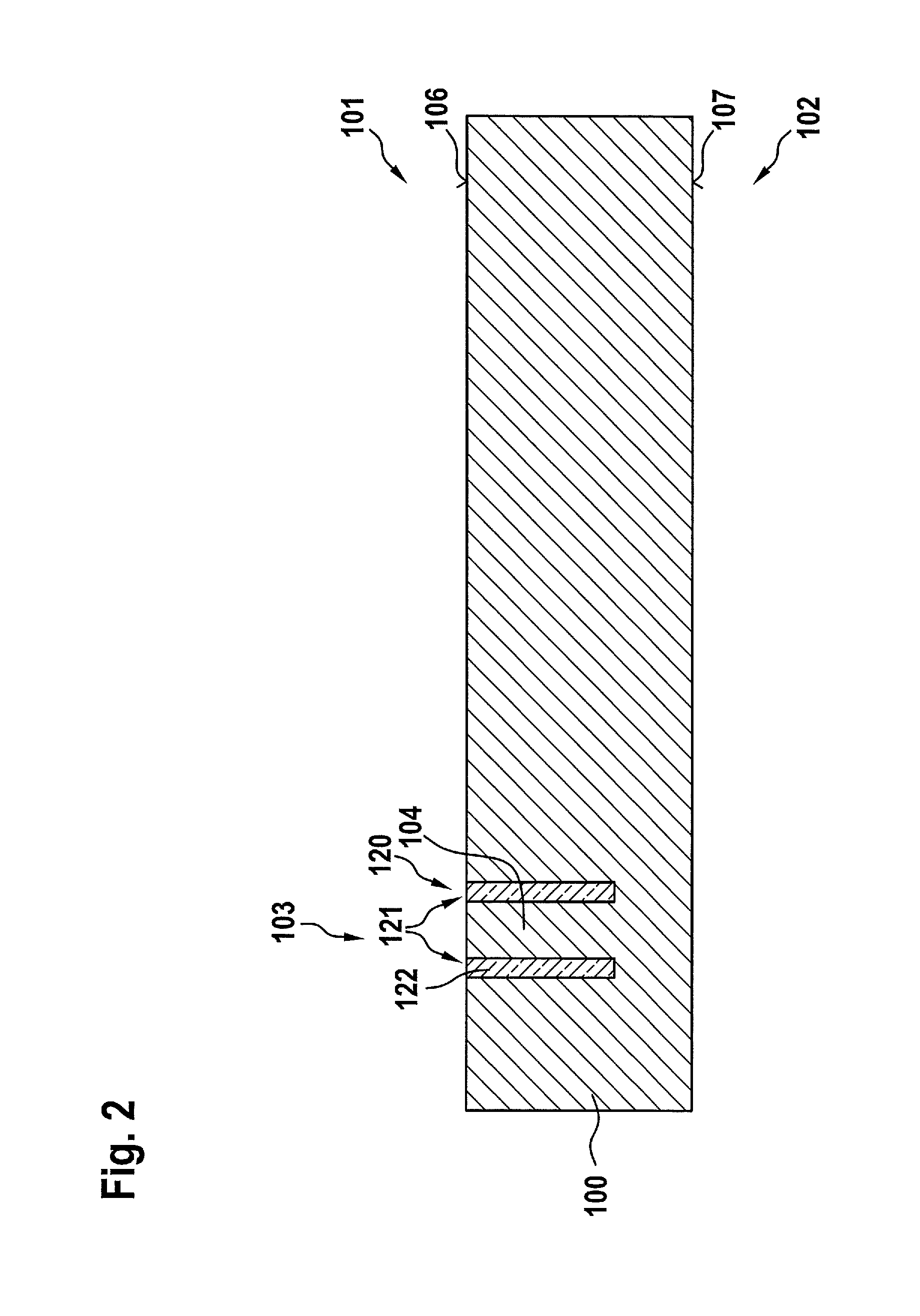Method for manufacturing a component having an electrical through-connection
- Summary
- Abstract
- Description
- Claims
- Application Information
AI Technical Summary
Benefits of technology
Problems solved by technology
Method used
Image
Examples
Embodiment Construction
[0034]The method according to the present invention is explained in greater detail below as an example, with reference to the manufacture of a component having at least one microelectromechanical functional structure, such as a microelectromechanical motion sensor or yaw rate sensor. The through-connection is produced in a semiconductor substrate which is used as a cap wafer for the microelectromechanical functional structure situated on the functional substrate. The starting point is a semiconductor substrate, for example in the form of a silicon wafer, in which a ring-shaped insulating structure in the form of an insulating trench filled with an insulating material is initially produced. Insulating trench 121 may be produced, for example, using a customary trench method or with the aid of a laser. FIG. 1 shows semiconductor substrate 100, having a front side 101 and a back side 102 opposite from front side 101. A ring-shaped trench structure 121 is initially produced on front side...
PUM
 Login to View More
Login to View More Abstract
Description
Claims
Application Information
 Login to View More
Login to View More - R&D
- Intellectual Property
- Life Sciences
- Materials
- Tech Scout
- Unparalleled Data Quality
- Higher Quality Content
- 60% Fewer Hallucinations
Browse by: Latest US Patents, China's latest patents, Technical Efficacy Thesaurus, Application Domain, Technology Topic, Popular Technical Reports.
© 2025 PatSnap. All rights reserved.Legal|Privacy policy|Modern Slavery Act Transparency Statement|Sitemap|About US| Contact US: help@patsnap.com



